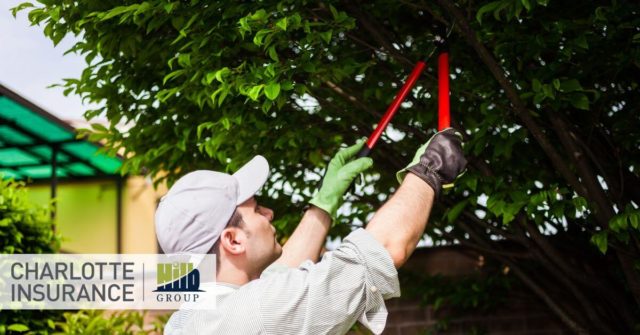A tree growing on your neighbor’s property fully belongs to them. You can’t tell them how to take care of their tree or when to trim it. But if the limbs grow over into your property, you have more options than you realize.
Here’s what you need to know.
When Tree Limbs Grow Into Your Property
In general, if limbs from your neighbor’s trees grow over onto your property and present a potential problem for you, you are legally allowed to trim the limbs back. However, you assume a certain risk when you do. If you damage or kill your neighbor’s tree in the process, you can be held liable for the damage.
You cannot demand that your neighbor trim the limbs growing into your yard. Nor can you demand that they take the tree down simply because some of the limbs are on your property.
The best option is to talk to your neighbor when you notice an issue with their tree. Let them know you’d like to trim the limbs. And if you believe the tree is dead or dying or otherwise likely to fall, this is a good time to say something.
If you don’t have the skill, knowledge, and tools to properly remove tree limbs, hire a professional. The tree service company should be licensed and insured so if harm is caused to the tree, they’re responsible for the damage, not you.
When Trees Fall Onto Your Property
The question of whether to trim the tree or not usually occurs when the limbs create a potential hazard for your property. Most people might appreciate the extra shade but not the risk of a limb coming down in a storm and damaging their home.
Who’s responsible if the tree comes down after a storm? Who’s going to pay for the damage to your home?
It depends.
When a well-maintained, healthy tree falls – or a big limb comes down – in a storm, this is considered an Act of God by most insurance policies. Your home insurance should pay the claim, up to your policy limits, with no issue even though the tree doesn’t belong to you.
However, if the tree wasn’t maintained by the property owner (your neighbor) or it was dead or dying, that could be seen as neglect, which means the owner of the tree is liable for the damages. This is usually something your homeowners insurance will pursue with your neighbor’s insurer.
Ideally, you’ll have a good enough relationship with your neighbor that you can discuss any tree problems with each other as they occur. This will help reduce any friction when limbs come down or trees begin to cause problems across property lines.
But make sure you know what your home insurance covers – and what it doesn’t – with regard to falling tree limbs. Contact Charlotte Insurance today for a free quote for a policy that protects you when trees start falling.

